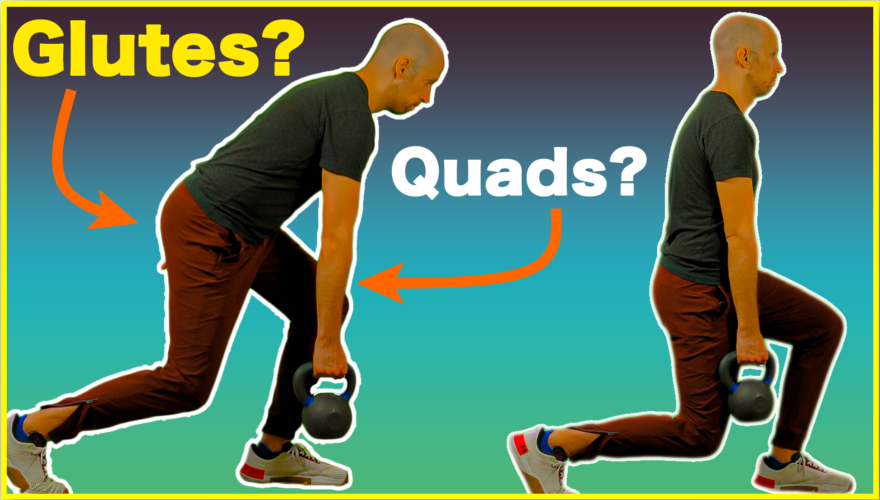Table of Contents
This minor split squat tweak can lead to MAJOR changes
By changing one small thing, split squats can become COMPLETELY different exercises. Working different muscles and exploring different ranges of motion.
But what is that one thing?
That’s what you’ll learn with this post.
Here, we will dive into:
– Split squat biomechanics
– How to DRASTICALLY alter loading between quads and hamstring
– How to MASTER technique to CRUSH lower body gains
Watch the video and read the post below to learn about it.
Basic split squat biomechanics
During the split squat, the following describes the start position:
- Sacrum faces away from the front leg
- External rotation is occurring on the ipsilateral (front) side pelvis
As one descends into the split squat, the following changes happen:
- The sacrum progressively turns more toward the front leg
- Increased internal rotation occurs both sides of the pelvis
- Weight distribution shifts more toward the front leg
As you can see, the #majorkey to loading the front leg is rotating the pelvis towards it.
But there’s one thing that can COMPLETELY change how the exercises work.
How trunk position influences biomechanics and loading
According to this split squat study, vertical trunk position increases quadriceps loading. Whereas a forward lean increases posterior chain activity.
How are the biomechanics between the two different?
Simple:
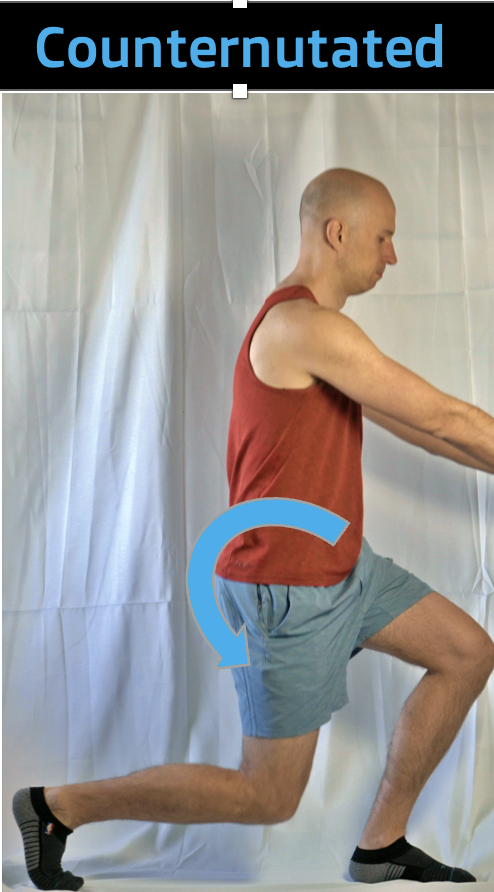
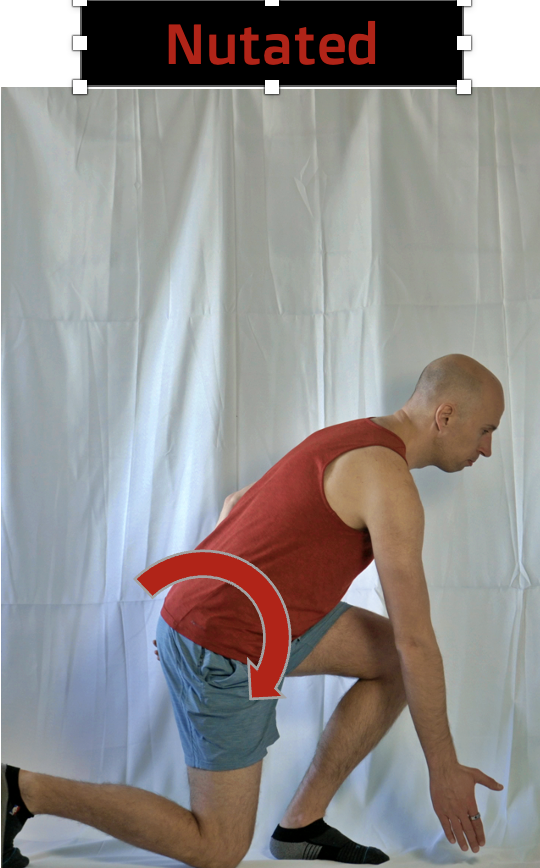
- Vertical torso promotes sacral counternuation and external rotation demands
- Hinged torso promotes sacral nutation and internal rotation demands
Depending on what adaptation I’m going for, I can choose one or the other.
If my goal is to increase range of motion, I’ll choose the variation that biases a particular rotation. For example, a lightweight hinged split squat might improve limited internal rotation.
If I’m using a split squat for force production, I’ll want to choose a variation that works in one’s available motion. A vertical torso split squat is a better choice for someone with a TON of external rotation (e.g. narrow infrasternal angle).
Coaching a split squat
Here are the cues to focus on coaching a regular split squat:
- Stance about 1.5-2 feet lengths apart
- Eyes look to the horizon
- Soft knees with the front leg having a neutral shin angle
- Silent nasale inhale
- Exhale through the mouth, reaching arms and moving body backward
- Inhale – Take a knee
- Exhale – back to start
The most common errors in the split squat are:
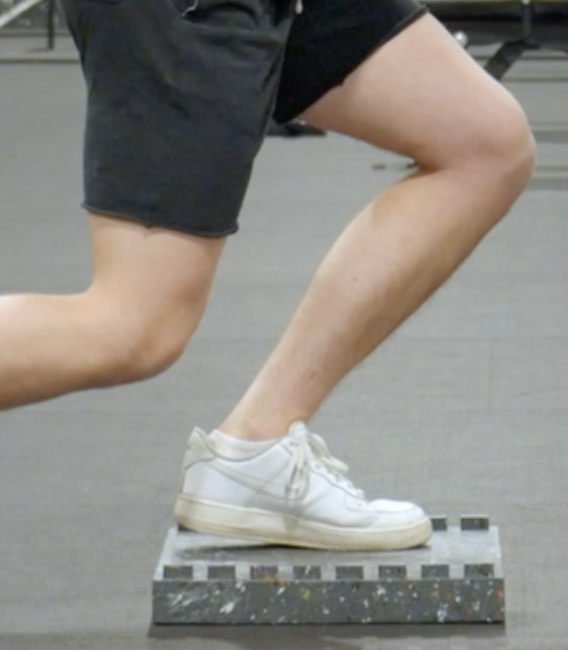
- Losing front heel contact (use a ramp if heel contact can’t be maintained)
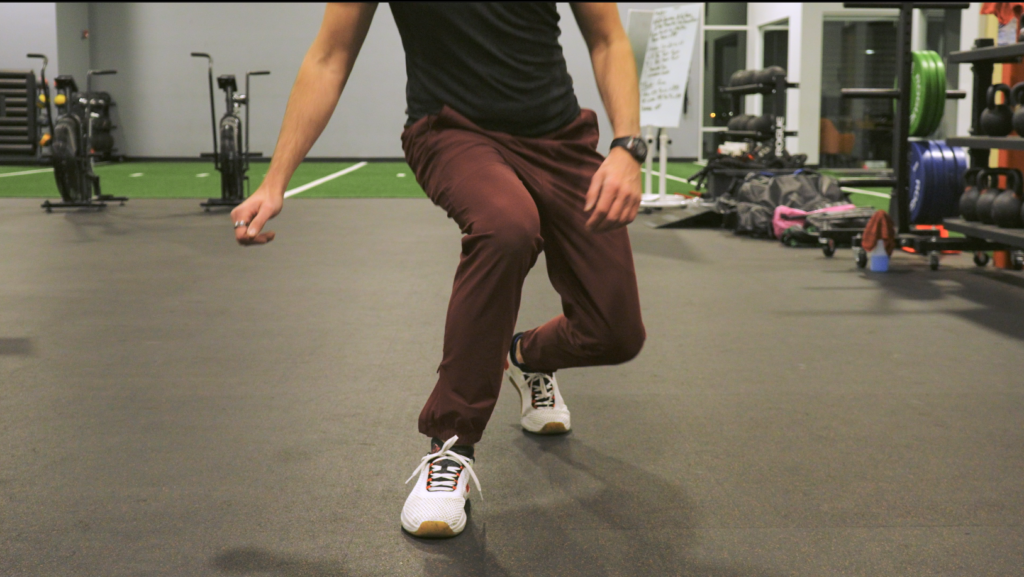
- Knees sweep out (To fix, limit depth or increase front foot elevation)
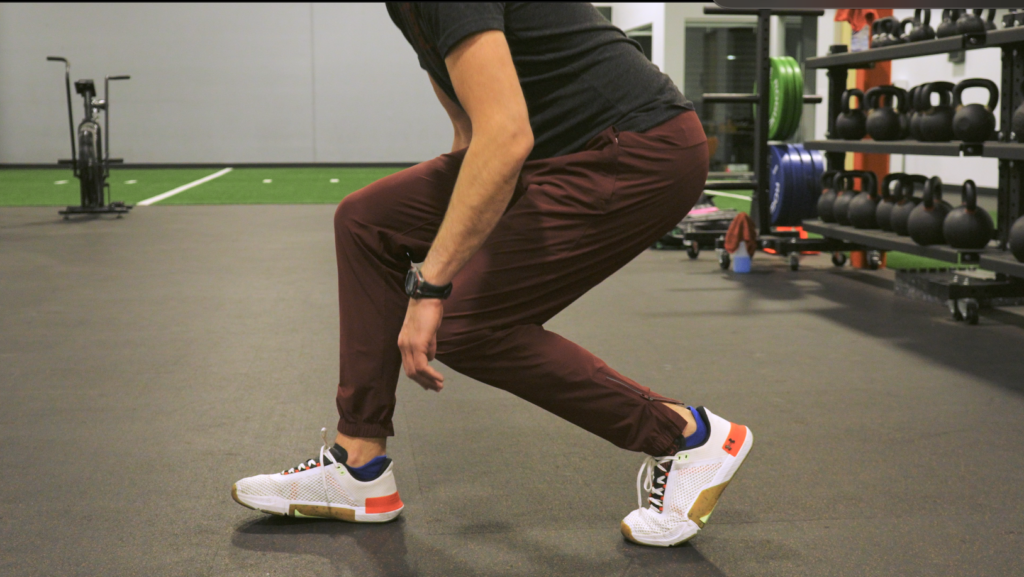
- Back hip flexes too much (To fix, limit depth or increase front foot elevation)
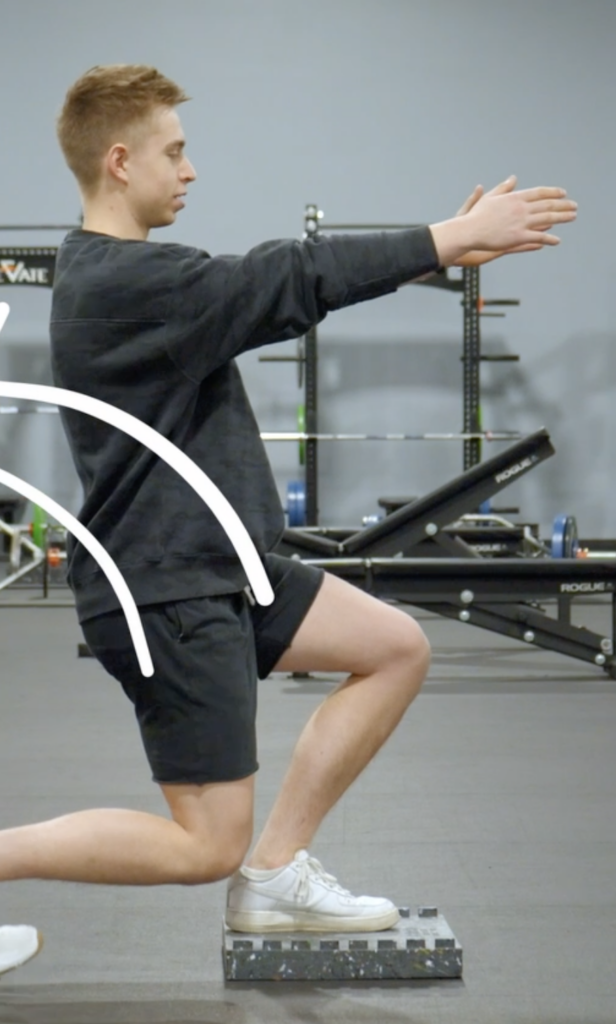
- Leaning torso backward (fix by hinging back)
Coaching a hinged/superhero split squat
Here are the cues to focus on coaching a hinged split squat
- Start feet hip-width apart with knees bent
- Eyes look to the horizon
- Exhale, reach arms forward, and push hips backward (keeping knees fixed)
- Slide one leg back 1.5-2 foot lengths, keeping the knee bent
- Inhale – Take a knee (imagine sliding your rear down a wall)
- Exhale – back to start
Sum up
That is how one simple variable can change the entirety of the split squat.
To recap:
- Vertical trunk position promotes sacral counternutation and external rotation
- Hinged trunk position promotes sacral nutation and internal rotation
Which variation do you program most often? Comment below and let me know!

